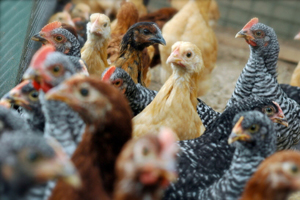Malaysian poultry sector strong despite setbacks

The Malaysian poultry sector has dealt with several issues in the last year including: poultry slaughterhouses not being registered or licensed, chronic fly infestations, requests to monitor antibiotic use, chicken colored with yellow food dye and sold as kampung, and chicken shortages with subsequent high prices.
To compensate for the this, in March 2014, the government of Malaysia (GOM) was urging all state governments to enforce the Poultry Farming Enactment to ensure all poultry slaughterhouses were licensed, registered, and meeting halal principles. Errant slaughterhouses are subject to fines and possible closure.
Despite these setbacks, Malaysia is largely self-sufficient in poultry meat production with broiler meat comprising the majority of total production and consumption, according to the USDA’s recent International Egg and Poultry review.
Broiler meat production is expected to grow at a rate of 2% to reach 1.44 million metric tons (MMT) in 2014. According to sources, poultry meat production is projected to rise 13.4% to 1.5 MMT by 2017-2018 with the help of investments. Egg production is projected to increase 3% in 2014 (679,803 MT) from 2013 (659,664 MT). Malaysia has the capacity to grow production even further, however rising production costs attributed to a reduction in fuel subsidies, the depreciation of the Malaysian Ringgit, and the implementation of minimum wages in 2013 limit growth. About 90% of production occurs on 3,200 farms in Peninsular Malaysia with the remainder in East Malaysia. Backyard and free-range poultry production has significantly declined and commercial production is insignificant.
Much of Malaysia’s feed inputs and genetic stock are imported from Argentina, US, and other countries. Commercially bred broilers comprise 67%, layers 25%, and breeders 8% of total birds in production. In December 2014, Malaysia was exploring setting up an animal feed plant in either Pahang or Sabah states in order to reduce dependency on imports of feed.
Poultry meat is a stable protein in the Malaysian diet in light of higher priced beef and a very extensive Muslim population (60%). At over 40 kilograms per year, Malaysia’s per capita consumption is among the highest in the world and can’t grow much higher. Consumption in 2014 is expected to increase to 1.43 MMT from 1.4 MMT in 2013. Wet markets are still an important distribution channel with about 40% of poultry meat marketed this way to consumers. However the GOM has indicated these outlets will need to be closed in future for hygienic reasons. The GOM also loosely enforces price controls with only seasonal price increases not permanent.
Imports are controlled and limited as all poultry meat must come from plants inspected and approved by Malaysia’s veterinary officials and halal certifying body. In addition, any plants wishing to supply Malaysia must agree to dedicate its facilities to full time halal slaughter and processing. Malaysia is predominantly supplied poultry meat by China followed by Thailand, Denmark, and the Netherlands. Brazil recently announced plans to market to Malaysia. In contrast, Malaysia does export some processed poultry products and some live broilers to Singapore and countries in the Middle East.
Source: USDA
Join 31,000+ subscribers
Subscribe to our newsletter to stay updated about all the need-to-know content in the poultry sector, three times a week. Beheer
Beheer








 WP Admin
WP Admin  Bewerk bericht
Bewerk bericht